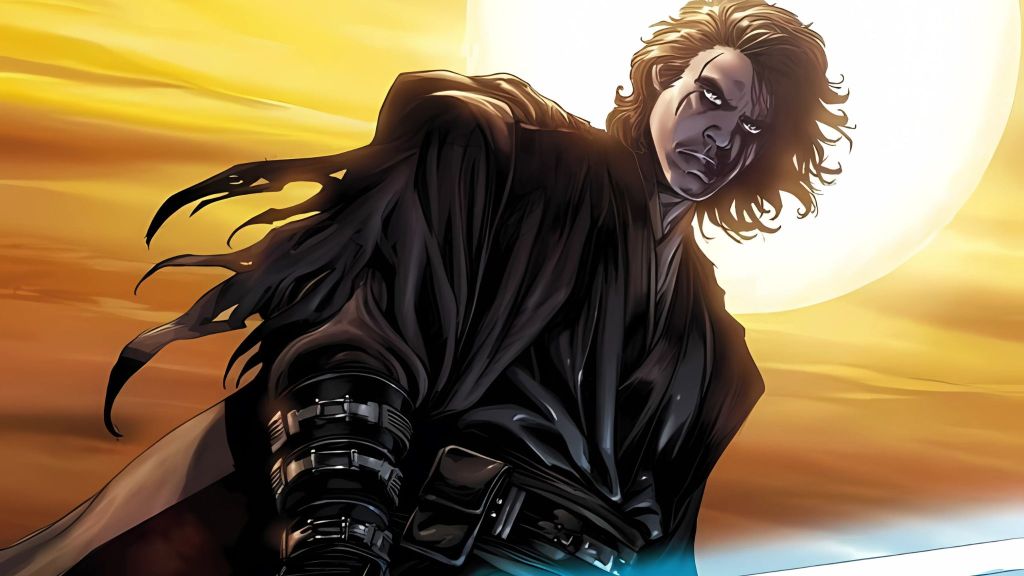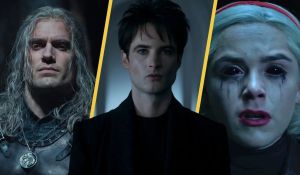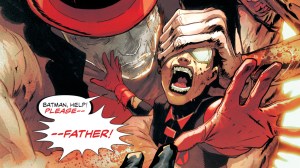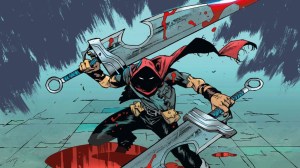The expansive galaxy far, far away, with its iconic heroes, villains, and epic conflicts, has captivated audiences for decades across films and television. While George Lucas’ initial vision laid the groundwork, Star Wars lore has been continuously woven and reinterpreted, often drawing significant inspiration from a less-explored but equally vibrant medium: comic books. From subtle nods in character design to direct adaptations of storylines, the influence of comics on the on-screen Star Wars universe is undeniable. These graphic novels, penned by talented writers and brought to life by visionary artists, have provided a fertile ground for ideas, character development, and world-building, proving that the Force is strong with this particular sequential art form. Delve into the fascinating origins of some of your favorite Star Wars moments and discover the comic book stories that helped shape them.
Videos by ComicBook.com
1) Star Wars: Dark Empire

Star Wars: Dark Empire, a six-issue comic series published by Dark Horse Comics, was written by Tom Veitch and illustrated by Cam Kennedy. This series boldly ventured into the post-Return of the Jedi era, presenting a galaxy still grappling with the Empire’s remnants. Its most significant contribution was the return of Emperor Palpatine, who had cheated death by transferring his consciousness into clone bodies. This narrative choice, though controversial among some fans, introduced the concept of cloning as a means of resurrection for powerful Force-users, a plot device that would later echo in major cinematic releases.
Beyond Palpatine’s return, Dark Empire also explored Luke Skywalker’s temptation by the dark side, as he briefly falls under Palpatine’s sway to learn his secrets from within. This internal struggle and the potential for a hero to be corrupted by the very evil they fight against is a tension filled plot point. Elements like the use of World Devastators, self-replicating machines, and the overall darker tone of a galaxy still scarred by war, showcased a grittier aftermath to the Galactic Civil War. These complex themes of legacy, power, and the enduring threat of the dark side found new life years later in the sequel trilogy.
2) Star Wars: Clone Wars Adventures
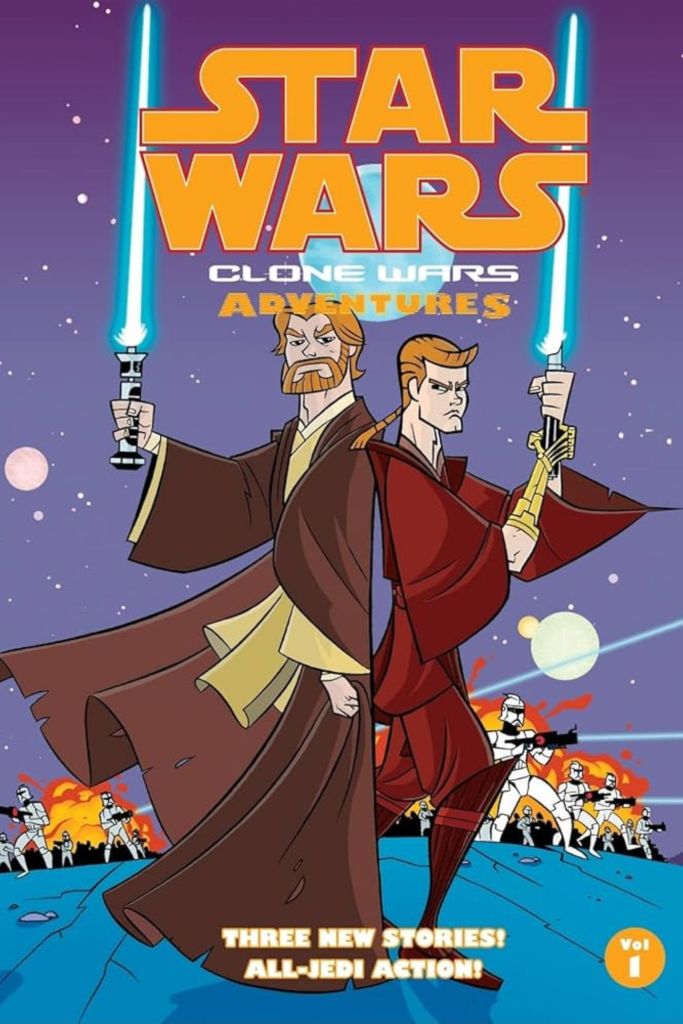
Star Wars: Clone Wars Adventures, a series of comic one-shots and mini-series published by Dark Horse Comics, often featured stories by various creators including Haden Blackman, and art by different artists like Thomas Hodges and Fillbach Brothers. These comics ran concurrently with the micro-series Star Wars: Clone Wars (2003) and aimed to bridge the gap between Star Wars: Attack of the Clones and Star Wars: Revenge of the Sith. They explored numerous skirmishes and character arcs during the galaxy-spanning conflict, providing a deeper look at battles and Jedi generals that the films only touched upon.
The comics were instrumental in fleshing out the personalities of many Jedi, giving them more screen time and showcasing their unique combat styles and leadership qualities. They also introduced new vehicles, planets, and alien species, expanding the lore of the Clone Wars significantly. While the later Star Wars: The Clone Wars animated series (2008) would largely supersede some of the specific events, the general spirit of adventurous, action-packed wartime stories, and the focus on individual Jedi and clone trooper experiences, undoubtedly laid a conceptual groundwork for the acclaimed animated show.
3) Star Wars: Tales of the Jedi

Star Wars: Tales of the Jedi, another seminal Dark Horse Comics series, was primarily written by Kevin J. Anderson and Tom Veitch, with art by artists like Chris Gossett and Dario Carrasco Jr. This ambitious series delved into the distant past of the Star Wars galaxy, thousands of years before the Skywalker Saga. It explored the origins of the Jedi and Sith, introducing foundational concepts like the Great Hyperspace War, the ancient Sith Lords Exar Kun and Ulic Qel-Droma, and the very nature of the Force’s light and dark sides.
The comics established a rich historical context for the Force and its practitioners, showcasing a different era of lightsaber combat, Force powers, and galactic politics. The designs of ancient Jedi and Sith temples, the aesthetic of their ships, and the scale of their conflicts provided a visual and thematic blueprint for later stories. While not directly adapted, the spirit of ancient Jedi and Sith conflict, the concept of a “prime Jedi” temple, and the overall aesthetic of a more raw and mystical Force were clearly influential on elements seen in films like Star Wars: The Last Jedi and the Knights of the Old Republic video games.
4) Star Wars: Republic

Star Wars: Republic, a lengthy ongoing series from Dark Horse Comics, featured numerous creators over its run, including writers John Ostrander and Jan Duursema, who also provided art. This series chronicled the events leading up to and during the Clone Wars, offering a gritty, ground-level perspective of the conflict from the viewpoint of various Jedi Knights and clone troopers. It often delved into morally complex scenarios, showcasing the toll of war on the Jedi Order and hinting at its eventual downfall.
Republic was notable for developing many secondary Jedi characters into fully fleshed-out individuals, such as Aayla Secura, Quinlan Vos, and Ki-Adi-Mundi, giving them extensive character arcs and showcasing their diverse personalities and fighting styles. The series also explored the seeds of the Empire’s control and the Jedi’s growing blind spots. The emphasis on the personal struggles of Jedi during wartime, and the exploration of the Republic’s slow corruption, undeniably influenced the thematic depth and character focus seen in The Clone Wars animated series, particularly in its portrayal of individual Jedi and the ethical dilemmas they faced.
5)Star Wars: Legacy

Star Wars: Legacy, the Legends continuity series published by Dark Horse Comics, was primarily written by John Ostrander and drawn by Jan Duursema. This series took place over a century after Return of the Jedi, introducing a new era of conflict and a new generation of Force-users. Its protagonist, Cade Skywalker, was a descendant of Luke Skywalker who had abandoned his Jedi heritage and become a bounty hunter, struggling with his destiny and the legacy of his powerful family.
Legacy explored themes of fallen heroes, the burden of a legendary name, and the struggle to find one’s own path amidst galactic upheaval. It also featured a new Sith Order, the One Sith, which was a unified and highly organized threat. While no direct adaptations have occurred, the concept of a troubled Skywalker descendant grappling with their heritage and the re-emergence of the Sith in a new form resonated with later developments in the sequel trilogy, particularly in the character of Rey and the return of Palpatine, echoing the idea of a dark future for the galaxy.

